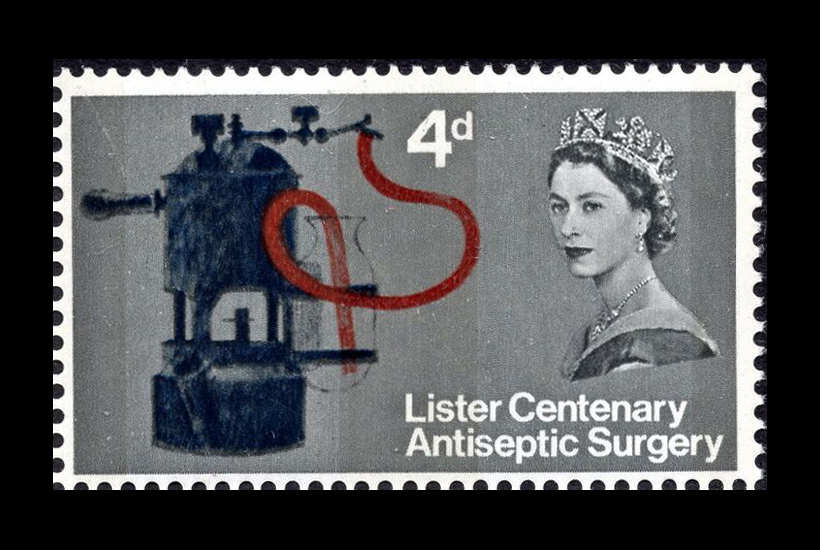Lister's Carbolic Spray (GB)
The stamp
This stamp was issued in Great Britain in 1965 to commemorate 100 years since Joseph Lister's discovery of antiseptic surgery. It shows his carbolic spray which was used to spray a fine mist of carbolic acid over the surgical site to prevent infection.
It is worth bearing in mind that 4d (approx 1.7p in today's money) was the cost of posting a standard letter in the UK in 1965!

The spray
Lister designed this spray to cover the wound in a fine mist of carbolic acid (phenol). The early one was large and needed an assistant to pump it continuously. It got the name of "the donkey engine" from the students!
He stopped using the spray in the late 1890s when he realised it added little to simple hand-washing and instrument cleaning in phenol. It also made everyone's eyes sore, and made them cough!
The doctor
Joseph Lister was born into a Quaker family on 5 April 1827 in West Ham, Essex. Because he was a Quaker, he could only study medicine at University College London. He worked with James Syme in Edinburgh, then became Professor of Surgery in Glasgow before returning to Edinburgh in 1869 as Professor. In 1881, he moved to King's College Hospital in London.
After reading the work of Louis Pasteur, Lister experimented with several ideas to reduce surgical wound infections. He invented the method of antisepsis using carbolic acid to wash hands and instruments, and to spray carbolic over the operating field.
He was made Baronet (Sir Joseph) in 1883, and then a Baron (Lord Lister) in 1897.
The urology connections
Obviously, Lister’s contributions to antiseptic surgery were vital to the progression of all surgery, including urology, but he also designed a type of urethral dilator (Lister's sound) which is still used today.
View Lister's sounds in the Instrument Cabinets
← Back to Stamp Collection